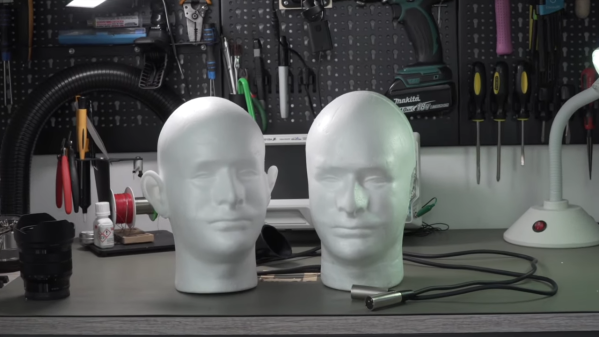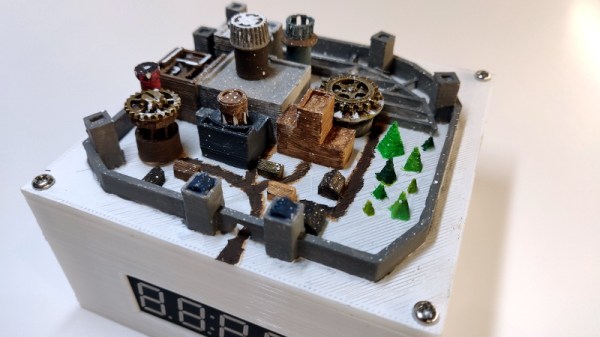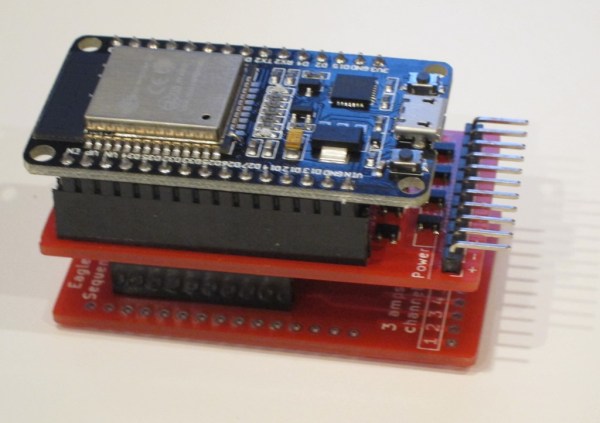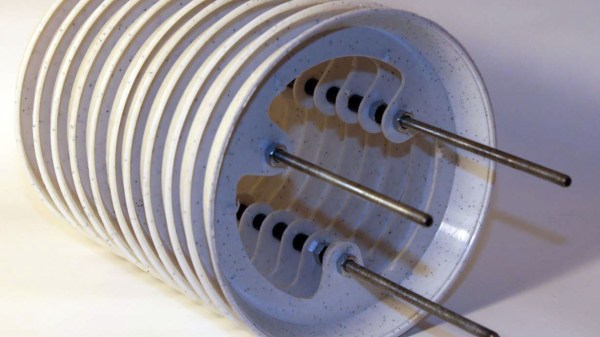We humans may not have superpowers, but the sensor suite we have is still pretty impressive. We have binocular vision that autofocuses and can detect a single photon, skin studded with sensors for touch, heat, and pain, and a sense of smell that can detect chemicals down to the parts per trillion range. Our sense of hearing is pretty powerful, too, allowing us to not only hear sounds over a 140 dB range, but also to locate its source with a fair degree of precision, thanks to the pair of ears on our heads.
Recreating that binaural audio capture ability is the idea behind this homebrew 3D microphone. Commercially available dummy head microphones are firmly out of the price range of [LeoMakes] and most mortals, so his was built on a budget from a foam mannequin head and precast silicone rubber ears, which you can buy off the shelf, because of course you can.
Attached to the sides of the foam head once it got the [Van Gogh] treatment, the ears funnel sound to tiny electret cartridge microphones. [Leo] learned the hard way that these little capsule mics can’t use the 48-volt phantom power that’s traditionally pumped up the cable to studio microphones; he fixed that problem with a resistor in parallel with the mic leads. A filtering capacitor, an RC network between the cold line and ground on the balanced audio line, and a shield cleverly fashioned from desoldering braid took care of the RF noise problem.
The video after the break shows the build and test results, which are pretty convincing with headphones on. If you want to build your own but need to learn more about balanced audio and phantom power, we’ve got a short primer on the topic that might help.
Continue reading “Homebrew Binaural Microphone Lets You Listen Like A Human”




















